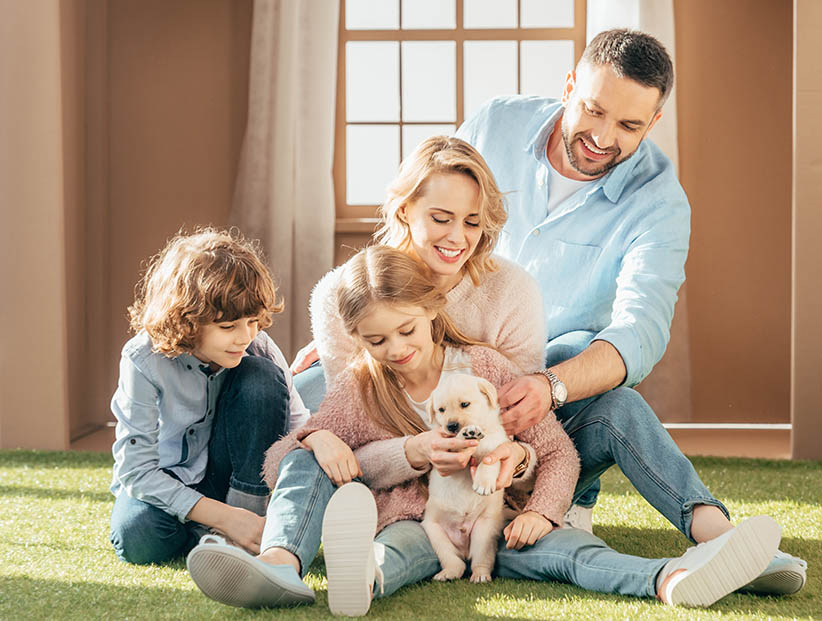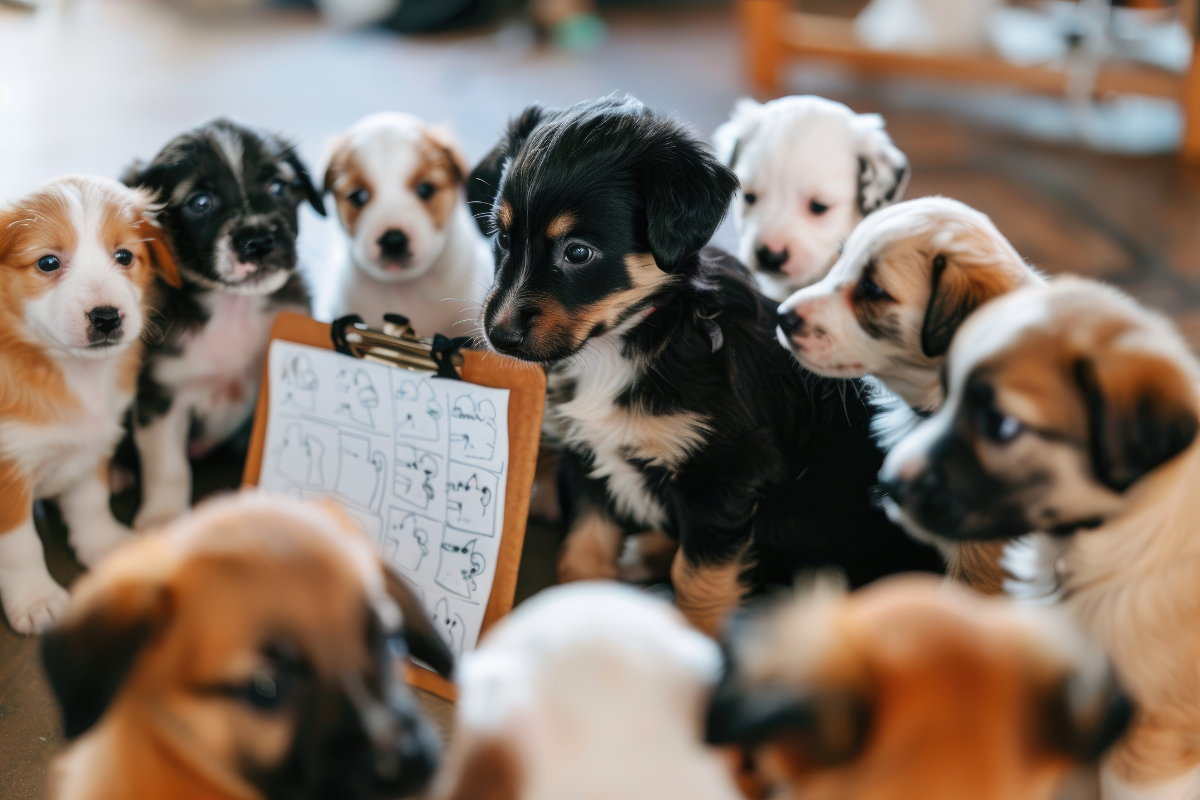The Greater Swiss Mountain Dog is a large breed of dogs that has its origins in Switzerland. It was one of the most popular breeds in the Swiss alps between the 18th to early 19th century. Today, however, its use has been revolutionized. Despite its size, it is considered a companion or a friendly family dog. Discover more about our Greater Swiss Mountain Dog puppies for sale below!
Breed History
The Greater Swiss Mountain Dog originated in Switzerland. Several theories have been passed around but there is no certain theory about its exact origin. However, two theories stand out from the rest.
The first theory claims that they were brought by the Romans during the Roman invasion. The second theory, on the other hand, claims that these dogs were brought by the Phoenicians to settlements in Spain in 1100 BC.
The Greater Swiss Mountain Dog is the oldest and largest of the four Sennenhund Breeds. These include the Appenzell Cattle Dog, Entlebuch Cattle Dog, and the Bernese Mountain Dog. In ancient Switzerland, the average Swiss farmer needed a large dog that could perform several tasks on the farm.
As such, these dogs were used as farm dogs. They were also used by butchers and other laymen who used them as guard dogs. Thus, they earned the name “Butcher’s dog” or “The poor man’s horse”.
Many people believe that the Greater Swiss Mountain Dog nearly went extinct in the late 19th century. This was because several other breeds were doing their jobs. However, they were rediscovered in the early 20th century.
Temperament
The Greater Swiss Mountain Dog is a very sociable and enthusiastic animal. It relates well with children and humans around them. Although it may be cautious around strangers at first, it quickly warms up to friendly humans.
Despite their large size, Greater Swiss Mountain Dogs are not aggressive. They are considerably gentle. They also require a lot of attention and affection from their owners and do not cope well in isolation.
The Greater Swiss Mountain Dog could be stubborn and determined. As such, it may be difficult and time-consuming to housebreak them. One would need to be firm yet loving with this breed of dogs.
Environment
Greater Swiss Mountain Dogs fare better in large apartments because of their size. Their huge and sturdy body frame requires a lot of space to stretch and run around. They are also suited for the outdoors, provided that the weather is cool.
They love to run outdoors when the weather is cool. However, they are prone to overheating and as such, should not be left outdoors for long during hot periods. These dogs do not fare well in kennels either and generally prefer to be indoors.
Thus, families or individuals who want to adopt a Greater Swiss Mountain Dog must ensure that they have a large apartment space.
Exercise
Just like any other breed, the Greater Swiss Mountain Dog needs daily, regular exercise. This could range from minor exercise routines such as a walk or playing fetch.
These dogs should not be taken on a run because they simply cannot keep up with it. They are more suited for exercises that involve pulling and dragging.
Owners should watch out for signs of exhaustion during exercise routines so as to avoid heat exhaustion.
Grooming
The Great Swiss Mountain Dog does not require much in the way of grooming. Although it sheds heavily, this can be taken care of by brushing its coat weekly.
They also require regular baths in order to keep their coats shiny and reduce the risk of fleas. In essence, the grooming process for this breed of dogs is quite simple and straightforward.
Our Greater Swiss Mountain Dog puppies for sale come from either USDA licensed commercial breeders or hobby breeders with no more than 5 breeding mothers. USDA licensed commercial breeders account for less than 20% of all breeders in the country.
The unregulated breeders who are selling outside of the USDA regulations and without a license are what we consider to be “Puppy Mills.” We are committed to offering Greater Swiss Mountain Dog puppies who will grow up to become important members of your family. We only purchase puppies from the very best sources, and we stand behind every puppy we sell.
Contact us today to learn more about the availability of our Greater Swiss Mountain Dog puppies for sale. We look forward to helping you find your next family member. Our pet counselors can answer any questions you have about our Greater Swiss Mountain Dog puppies.
Common/ Frequently Asked Questions about the Greater Swiss Mountain Dog
Are Greater Swiss Mountain Dogs safe for children?
Yes. Despite their large size, these dogs are actually very friendly and farewell with children.
Do I have to worry about bites with Greater Swiss Mountain Dogs?
Greater Swiss Mountain Dogs are not aggressive and won’t bite unless they sense animosity. If they show signs of aggression, you can curb the behavior.
Can Greater Swiss Mountain Dogs be used as a guard dog?
Yes, they can. This breed of dogs are very alert and will bark if they notice anything strange or dangerous.
Will my Greater Swiss Mountain Dog get along with my cat?
Greater Swiss Mountain Dogs are very friendly and will get along with other pets. However, it is better to raise them alongside other pets in order to reduce the risk of territoriality.
How often do Greater Swiss Mountain Dogs need shots?
This depends on the age and health status of the dog. It is important to consult your vet.
What health problems do I need to look out for with Greater Swiss Mountain Dogs?
These dogs are usually prone to bloating. They may also experience bone or joint problems.
What do Greater Swiss Mountain Dogs eat?
They eat mainly dry food of high quality. It is important to feed them on a diet well suited for large dogs.
Can I keep Greater Swiss Mountain Dogs outdoors?
Greater Swiss Mountain Dogs loves the outdoors but do not cope well when isolated from their family. Thus, it is best to keep them indoors.
How do I potty train Greater Swiss Mountain Dogs?
Monitor your Greater Swiss Mountain Dog and take it out for walks. Ensure that you take it to the same place every day to defecate. With time, it would get used to it.
What games can I play with my Greater Swiss Mountain Dog?
You can play fetch or games that involve pulling and dragging.
Greater Swiss Mountain Dogs may be large but are one of the best breeds for your family. With sufficient space and tolerance for slobber, you can successfully train your very own Greater Swiss Mountain Dog.

It's estimated that Americans own around 70 million dogs.
We are proud of our commitment to animal welfare and quality of our pets.
There are many options for adding a puppy to your family.
Learn More
DEC
19
As a cat owner, ensuring the health and safety of your furry friend is a top priority. With the emergence of avian influenza, commonly known as bird flu, it’s crucial to understand how this virus can affect your beloved pet and what steps you can take to protect them. Understanding Avian Influenza in Cats Avian influenza is a viral infection that primarily affects birds but can also impact other animals, including cats. While the risk of transmission to cats is relatively low, it’s important to be aware of the potential dangers, especially if your cat has access to the outdoors …
Read More
NOV
27
Ah, Christmas! The time of year when homes are aglow with twinkling lights, the air is filled with the scent of pine, and everyone is wrapped in a warm, fuzzy feeling of joy and anticipation. But hey, while we’re all caught up in the holiday cheer, let’s not forget about our four-legged friends who are just as excited about the festivities. Ensuring their safety, finding the right toys, and providing optimal nutrition can make this season even more magical for them. So, how do we make sure our pets enjoy a paws-itively delightful Christmas? Pet Safety: Keeping the Season Jolly …
Read More
NOV
26
There’s nothing like the joy of bringing a fluffy, four-legged bundle of joy into your life. Puppies are the ultimate companions—full of love, energy, and just a little bit of mischief! Whether it’s your first time bringing a pup home or you’re adding a new member to your growing pack, there are a few key things to keep in mind to help your new puppy thrive. Get ready for an adventure of snuggles, playtime, and puppy kisses with these fun and playful tips! 1. Pick Your Perfect Match Before you meet your new best friend, you’ll want to make sure …
Read More